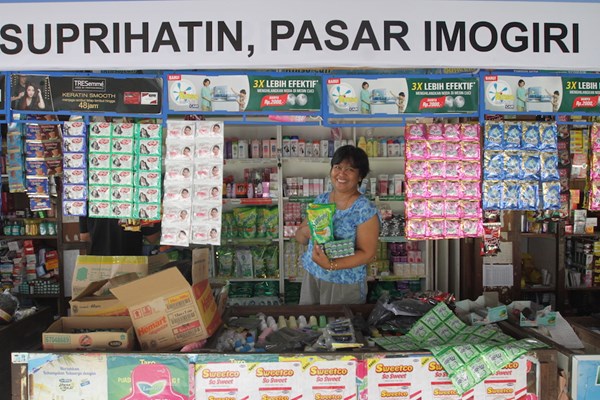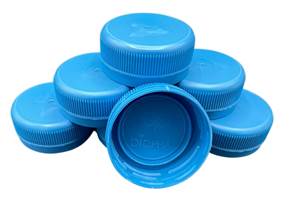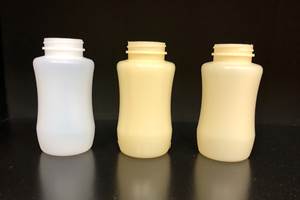Unilever Introduces Process to Recycle Multilayer Sachets
Plastics from the post-consumer sachets will be channeled back into the supply chain.
A major brand is once taking on a big initiative toward reducing plastic waste: Unilever announced it is working with partners on a new technology to recycle sachets (aka multi-layer flexible packaging consisting of a thin film of plastic and aluminum). Called the CreaSolv Process, this technology has been developed with the Fraunhofer Institute for Process Engineering and Packaging IVV in Germany and is inspired by an innovation used to recycle TV sets.
Billions of single-use sachets are sold every year, particularly in developing and emerging markets. But without a viable recycling solution, the packaging ends up in landfill or as litter.
The CreaSolv Process technology has been adapted from a method used to separate brominated flame retardants from waste electrical and electronic equipment polymers. During the process, the plastic is recovered from the sachet, and then reapplied in the creation of new sachets for Unilever products.
To tackle the industry-wide sachet waste issue, Unilever is looking to create a sustainable system change by setting up waste collection schemes to channel the sachets towards recycling. Currently, Unilever is testing this by working with local waste banks, governments and retailers. It will also look to empower waste pickers, integrating them into the mainstream economy and providing them potential long-term income.
Unilever will open a pilot plant in Indonesia later this year to test the long-term commercial viability of the technology. Indonesia, is a critical country in which to tackle the waste, as it produces 64 million metric tons every year, with 1.3 million metric tons ending up in the ocean.
David Blanchard, chief R&D officer at Unilever, said that at the start of this year, the company made a commitment to help solve this problem by developing new recycling technologies. The company intends to make the technology open source, with hopes to scale it up with industry partners, so that in the end, others—including its competitors—can use it.
“There is a clear economic case for delivering this,” he stated. “We know that globally $80-120 billion is lost to the economy through failing to properly recycle plastics each year. Finding a solution represents a huge opportunity. We believe that our commitment to making 100% of our packaging recyclable, reusable or compostable will support the long-term growth of our 大象传媒.”
This announcement is part of Unilever’s pledge to ensure all of its plastic packaging is fully reusable, recyclable or compostable by 2025.
Andreas Mäurer, department head of plastic recycling at the Fraunhofer IVV stated:
"With this innovative pilot plant we can, for the first time ever, recycle high-value polymers from dirty, post-consumer, multi-layer sachets. Our aim is to prove the economic profitability and environmental benefits of the CreaSolv Process. Our calculations indicate that we are able to recover six kilos of pure polymers with the same energy effort as the production of one kilo of virgin polymer."
According to Fraunhofer IVV, the plastics that are recycled from contaminated mixtures or composite materials have properties equivalent to those of the virgin plastics.
The 3 main steps in the process are:
- Dissolution of the target plastic using a selective solvent; other components in the waste fraction remain undissolved;
- Separation of contaminants from the recovered polymer solution;
- Precipitation of the target plastic from the purified polymer solution.

Related Content
How to Optimize Color Evaluation of Recycled Plastics
The right color measurement instrument and good working methods will minimize variability in color evaluation of PCR.
Read MorePHA Compound Molded into “World’s First” Biodegradable Bottle Closures
Beyond Plastic and partners have created a certified biodegradable PHA compound that can be injection molded into 38-mm closures in a sub 6-second cycle from a multicavity hot runner tool.
Read MoreHow to Extrusion Blow Mold PHA/PLA Blends
You need to pay attention to the inherent characteristics of biopolymers PHA/PLA materials when setting process parameters to realize better and more consistent outcomes.
Read MoreBreaking News From NPE2024
Here is a firsthand report of news in injection molding, extrusion, blow molding and recycling not previously covered.
Read MoreRead Next
Beyond Prototypes: 8 Ways the Plastics Industry Is Using 3D Printing
Plastics processors are finding applications for 3D printing around the plant and across the supply chain. Here are 8 examples to look for at NPE2024.
Read MoreSee Recyclers Close the Loop on Trade Show Production Scrap at NPE2024
A collaboration between show organizer PLASTICS, recycler CPR and size reduction experts WEIMA and Conair recovered and recycled all production scrap at NPE2024.
Read More














